
Nearly a month has passed since the catastrophic break of a water main in Calgary, Alberta. The break has required extraordinary efforts from city staff, contracted engineers and construction teams, and residents. As one of the main arteries for potable water in the city, carrying as much as 60% of Calgary’s drinking water, the pipe’s failure spurred a state of emergency. Everyone from businesses to individuals have been asked to slash water usage as the city deals with the crisis.
There’s an added element of pressure to complete repairs, as Calgary is about to welcome tens of thousands of visitors for its famous Stampede, beginning on July 5.
The City of Calgary now believes that repairs will be complete in time for the Stampede, allowing life to return to normal just as their largest tourism event of the year kicks off. The break highlights the critical but overlooked importance of underground infrastructure, while raising questions about construction practices and asset management.
At this point, it’s not clear exactly why the break occurred, though there are some theories emerging. Calgary’s mayor recently made commitments to investigate both the status of Calgary’s underground infrastructure and the city’s response to the emergency through third-party committees. Some infrastructure experts point to Calgary as a possible canary in the coal mine, suggesting that similar failures are possible in major cities across Canada.
Let’s break down the water main break as we understand it today. From known points of failure to possible reasons for the break, this analysis will cover the current situation from a trenchless point-of-view.
Catastrophic failure of pipe infrastructure is a rare but memorable event for everyone involved. Several steam pipe failures in New York City have resulted in costly clean-up activities, injuries, and even deaths since the late ‘80s. Sewer system collapses resulting in sink holes and sewage backups occur around the world, including significant collapses in Baltimore and London over the past decade.
When things go well, we tend not to think about underground assets at all. In fact, even when things aren’t going well, we rarely notice. There are countries that lose upward of 50% of their potable water to leaking pipes. That’s a massive burden on water management utilities, but until a catastrophic issue occurs, the problem tends to get ignored. As hundreds of thousands of gallons of water flooded the streets of Calgary, it was immediately clear that this problem could not be ignored.
City staff acted quickly to shut down water to the affected main and begin immediate inspection and repair. In addition to the main breach, the city identified five “hot spots” along a 400m section of the main that may fail in the near future. The ongoing repair work focuses on fixing those hot spots before they become an issue.
These hot spots aren’t leaking—yet. They are noted “structural deficiencies.” At this time, the exact nature of these deficiencies is unknown. City officials say that repairs will take longer while dealing with these hot spots than if they’d only addressed the immediate failure, but that repairing hot spots now is the safer and more cost-effective option.
In order to complete the repair as quickly as possible, the City of Calgary has requested and received help from the private sector and from other communities. Notably, San Diego shipped them a suitable segment of replacement pipe that would have taken weeks to procure otherwise, significantly speeding up the timeline for repair.
There have been a number of minor water main breaks in Calgary this year, though the current issue is by far the largest and most impactful.
During questioning by city counsellor Jennifer Wyness, a city official confirmed that the affected water main had not been inspected in a decade prior to its failure.
During a catastrophic outage, this may be perceived as a lack of care and attention to infrastructure. At this time it is not clear that this is the case. Due to the circumference of the pipe, robotic inspection is difficult. Proper inspection may require shutting off water flow. If the city chose to inspect the water main every two years, would citizens of Calgary accept semi-annual water outages to facilitate that inspection?
The water main was installed roughly fifty years ago and was rated to last for a century, making its failure a shock to everyone involved.
However, there may have been known issues with the pipe used for this water main. In 2004, a smaller water main broke in the city. The reason for the failure was found to be deficiencies in the concrete pipe. The concrete proved to be too porous, making the pipe more prone to chemical degradation. If the same type of pipe with the same flaw is found to be at fault for the current failure, Calgary could end up footing a hefty bill as they work to replace defective pipelines across the city.
Another issue Calgary struggles with is high population growth. In many ways, this is a positive for the city. Net positive migration helps grow Calgary’s economy. But increased population puts increased pressure on infrastructure. Pipelines that were well-suited to Calgary in the ‘80s and ‘90s may be insufficient for today’s needs.
The Canadian Infrastructure Report Card listed Calgary’s underground assets as “fair or worse,” indicating a need for systemic upgrades. It’s easy to see a report like that and push for immediate remediation, but is that financially viable?
Infrastructure management involves a complex mix of fixed and variable costs and revenues. For example, pipelines are fixed-cost assets. There’s a project cost for upgrading or installing a pipe that can be broken down over the anticipated lifespan of the pipe. Potable and wastewater treatment are variable or adjustable costs. There’s a rate fee to water processing that fluctuates over time based on labour costs, supply costs, and volume of water treated.
Calgary offers both flat fee and metered rates for residential and business water utility usage, though it encourages the adoption of the metered system. Metered rates can pose challenges to budgeting for water infrastructure. Reducing water usage is a social and environmental good, something many communities strive for. Under a metered system, reduced water usage reduces fees collected, but also reduces the variable cost of water management. However, it may not increase the lifespan of fixed-cost water infrastructure accordingly. If water usage becomes more efficient in a community, it can result in budget shortfalls for addressing the fixed costs of underground infrastructure unless such shortfalls are carefully accounted for by raising rate fees.
Communities from Santa Barbara, California to Melbourne, Australia have had to make significant changes to their fee structures after residents successfully reduced water usage during drought conditions. This can be a politically unpopular move as some residents may fear they pay more for less.
As Calgarians continue to deal with water restrictions, the city has made a number of temporary policy changes to address the water shortage.
Two temporary licenses issued by the Alberta government to the City of Calgary allow businesses to draw water out of the nearby Bow River. This non-potable water is suitable for landscaping, dust suppression, and equipment cleaning. Special accommodations for businesses aren’t always popular—particularly for residents whose lawns and gardens turn brown while businesses maintain their own landscaping. Providing these accommodations is important, though. It mitigates the current and future economic impact of the shortage by allowing more businesses to maintain operation while preserving landscaping assets like trees and shrubs that may struggle or die without continued watering.
As of writing, it’s still not a certainty that Calgary’s repairs will be complete in time for the first day of Stampede on July 5th. The Stampede is a water intensive event for a variety of reasons including dust suppression, cleaning and watering animals, and the sheer volume of people attracted to the event each year. Calgary plans to truck in water to handle the most pressing water needs of the event. It may also adjust operations to use less water. One official suggested that stadiums and seats would be cleaned less frequently than usual.
Not all residents are pleased with the city’s focus on Stampede. Calgarians have been asked to, among other things, forego daily showers and flush their toilets less often to reduce water consumption. For some, making significant and possibly costly concessions to host a large tourist event during the crisis is unpalatable. Still, most residents recognize the cultural and economic importance of the Stampede. Estimates vary, but the city could stand to lose as much as $300M in tourism revenue by cancelling the event.
Calgary may be about a week away from solving this crisis, but identifying the reasons why the pipe failure occurred may take months. Defective concrete could be at fault, but there’s only circumstantial evidence pointing in that direction for now.
The city’s transparent approach to the issue should be commended. It serves the interests of every stakeholder to conduct a thorough third-party investigation. Infrastructure failing only halfway through its anticipated lifespan is concerning and warrants immediate attention.
Perhaps Calgary’s struggle will shine a light on other undermaintained infrastructure in North America. How many cities remain vulnerable to a similar failure due to faulty materials, poorly maintained pipes, or other out-of-sight, out-of-mind issues?
In this sense, the crisis is a rare opportunity: a chance for communities across Canada to have conversations about infrastructure. Finding and addressing faults before they become catastrophes could prevent the next major municipal water crisis.
The field of trenchless technology evolves rapidly. Concerned about infrastructure in your community? Talk to our expert team about a consultation. We can help you diagnose the health of crucial infrastructure, managing your assets the smart way and potentially avoiding the kind of failure seen in Calgary.
An alternate tendering process where the contract is awarded to one entity which comprises both engineering and contracting.
Because PW Trenchless Construction offers such innovative solutions for underground utilities, it is often beneficial for the owner to request solutions based on a performance specification. This allows PW Trenchess to offer unique solutions while working with equally innovative engineering companies. Learn more about design - build here!
More InfoNew installation methodologies include HDD & traditional open cut Learn more about new installation here!
More InfoIn this day & age of pipe systems reaching the end of their projected lifespan, pipe replacement and pipe rehabilitation have become major fields of engineering.
PW Trenchless Construction provides viable options such as pipe bursting, loose fit lining and internal pipe re-construction whether partial & fully circumferential. Learn more about pipe replacement & rehabilitation here!
More InfoThe aging culverts under roads and highways in many case have reached the end of their engineered life-span. We consider the rehabilitation or replacement of these culverts to be vital to our built environment.
PW Trenchless has been a pioneer in working with MOTH, railway companies and municipalities in developing rehabilitation methodologies for the hundreds of thousands of culverts that currently exist in BC. We have offered solutions in both procurement and construction from design-build to sliplining, invert rehabilitation and full circumferential relining. Learn more about culvert rehabilitation here!
More InfoOften pipe failure can be concentrated to one section, for various reason, leaving the rest of the pipe in good condition. The repair of these localized failures are know as external point repairs (EPR's).
EPR's demonstrate PW's ability to work as both a trenchless and civil contractor, completing EPR contracts using our civil contracting skills and assisting other pure trenchless contractors who only have the capacity to work in an existing pipe. Learn more about point repairs here!
More InfoPipe upsizing is the fundamental concept of pipe bursting.
The vast majority of pipes are less than or equal to 200mm in diameter, but with today's densification practices of urban design, there is a major demand to increase current capacity to handle extra flow. Pipe bursting provides the ideal solution to this issue, particularly in an urban setting. Learn more about pipe upsizing here!
More InfoHorizontal Directional Drilling is a low impact Trenchless construction service where pipe is installed in a shallow arc along a bore path which has been created by a drilling rig. Often the terms Horizontal Directional Drilling (HDD) and Directional Boring are used interchangeably, but in our industry we use the word “boring” when we utilize smaller sized drilling rigs with small diameters for short crossings in the hundreds of feet, and we use the word “drilling” when we utilize larger rigs with large diameters for long crossings in the thousands of feet. Learn more about horizontal directional drilling here!
More InfoPrimus Line® is a flexible sliplining solution for the trenchless rehabilitation of pressure pipes. The system consists of a flexible Kevlar® reinforced liner and specially developed end fittings. Primus Line® is not bonded to the host pipe and is self-supporting. An annulus remains between Primus Line® and the host pipe.
Developed by experienced engineers, the system is suitable for different media as well as various application needs and has already proven itself in numerous projects.Learn more about primus lining here!
More Info



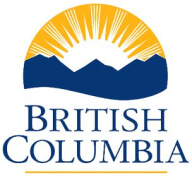



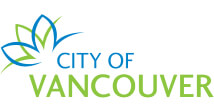




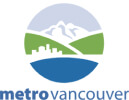




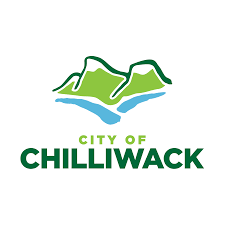
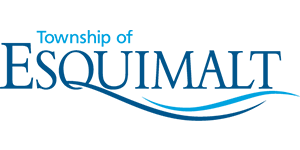

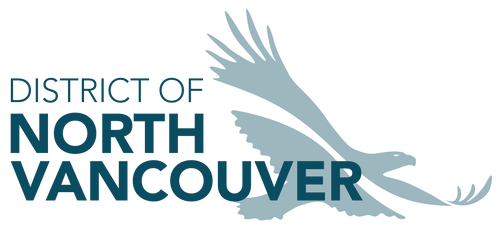
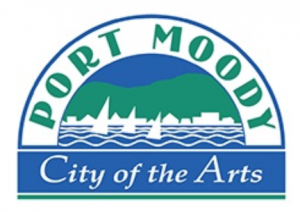

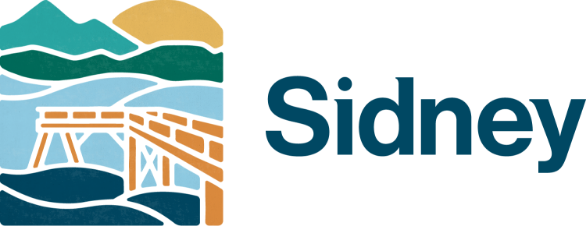

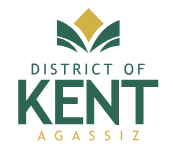



When you join PWT, you become part of a community of people who are engaged in the most innovative practices in the Trenchless Industry. We have been instrumental in setting up a scientific method for cities to gain carbon offsets/credits from their use of trenchless construction. This system has been reviewed by the BC Government and has been approved as of December 2018. We expect to see it in common use shortly.
Subscribe to our newsletter for cutting-edge industry updates, expert knowledge, and exclusive content.